Lotus Exige review: new Cup 430 driven

Another Lotus? I can’t keep up!
Indeed. It’s the Lotus Exige Cup 430, and you really won’t be able to keep up. It’s the fastest Lotus road car ever.
The 430bhp 3.5-litre V6 engine from the Evora GT430 (the last new Lotus) is slotted into the welterweight Exige, the result being a 3.2sec 0-60mph time and a 180mph top speed.
It also boasts the quickest lap yet for a road car around Lotus’s Hethel test track, the Cup 430 being a full second quicker than that Evora. A Nürburgring lap will happen in spring 2018, though Lotus won’t tell us the target…
Those red stripes mark out a special edition, presumably?
Nope, this is a full production car, numbers aren’t limited. It sits at the very top of the Exige range, perhaps not surprising when it costs £99,800. That places it above the £57k Sport 350 and £68k Sport 380.
As well as extra power, there’s a load of other stuff as standard. That includes a light and loud titanium exhaust, nigh on infinitely adjustable Nitron suspension, carbon bodywork (roof, bonnets, splitter) and a taller rear wing that brings unfathomable amounts of downforce. Naturally the brakes are bigger and tyres stickier, too.
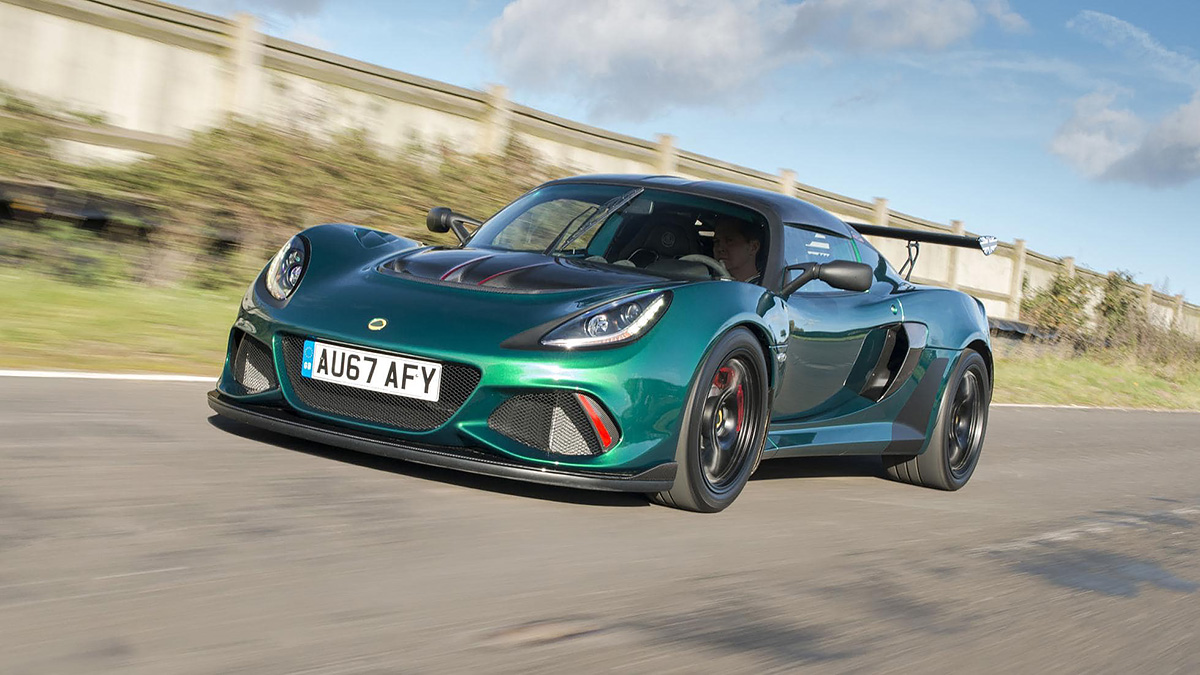
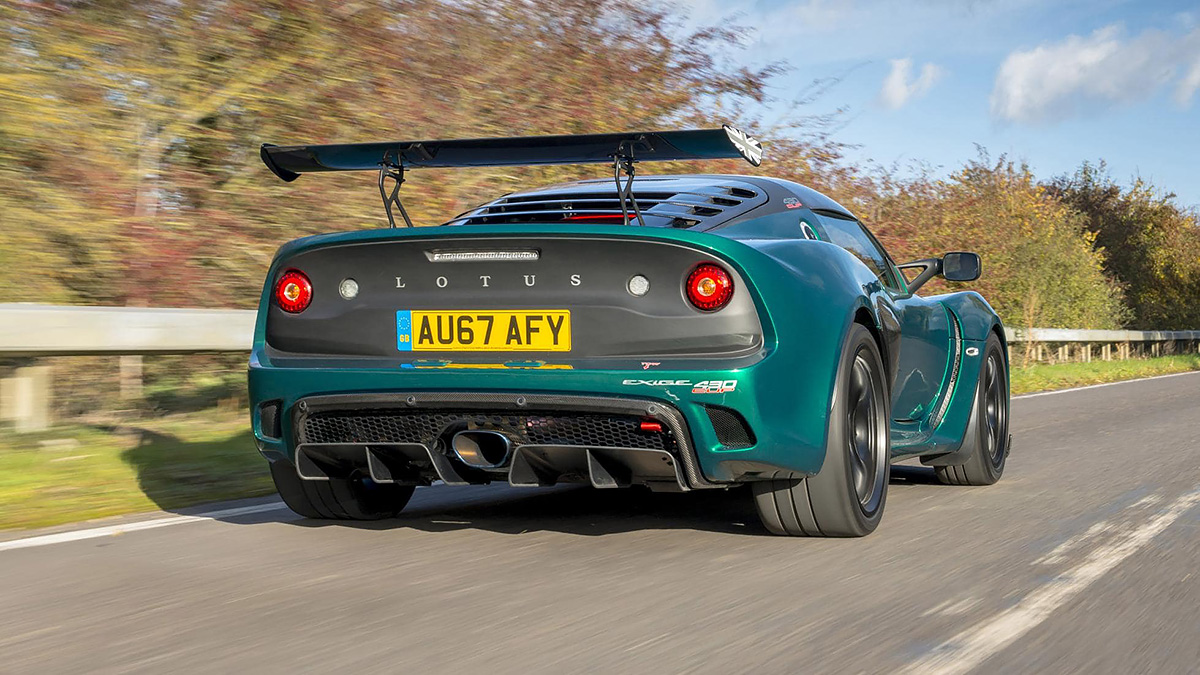
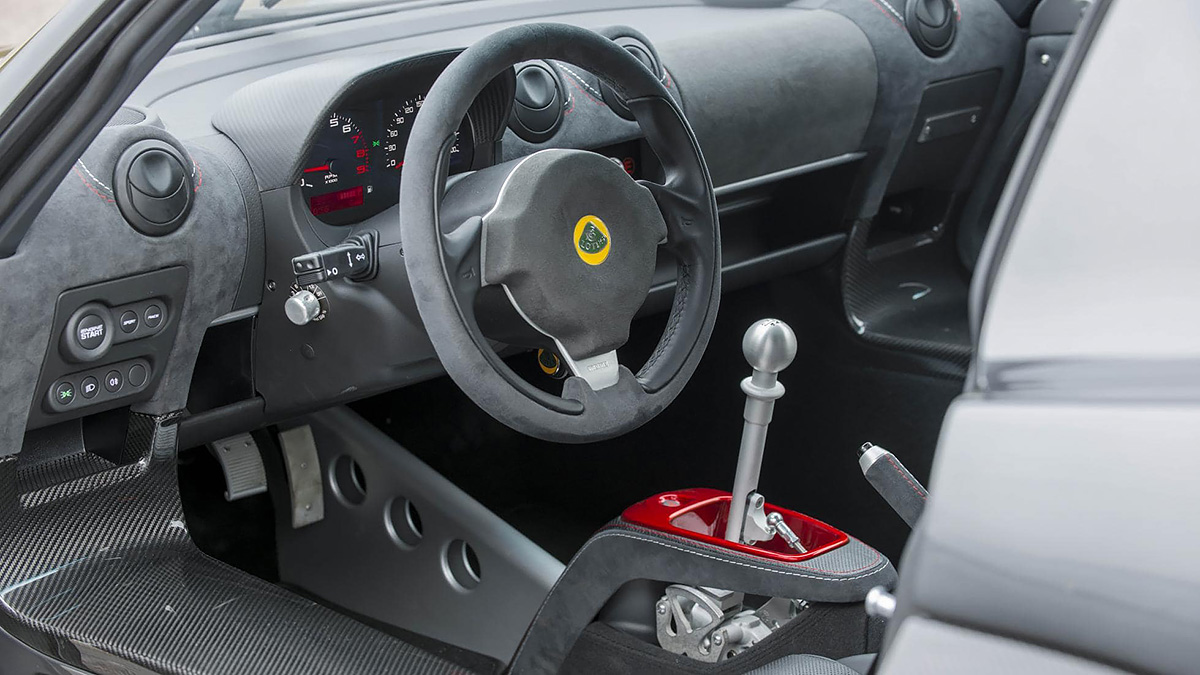
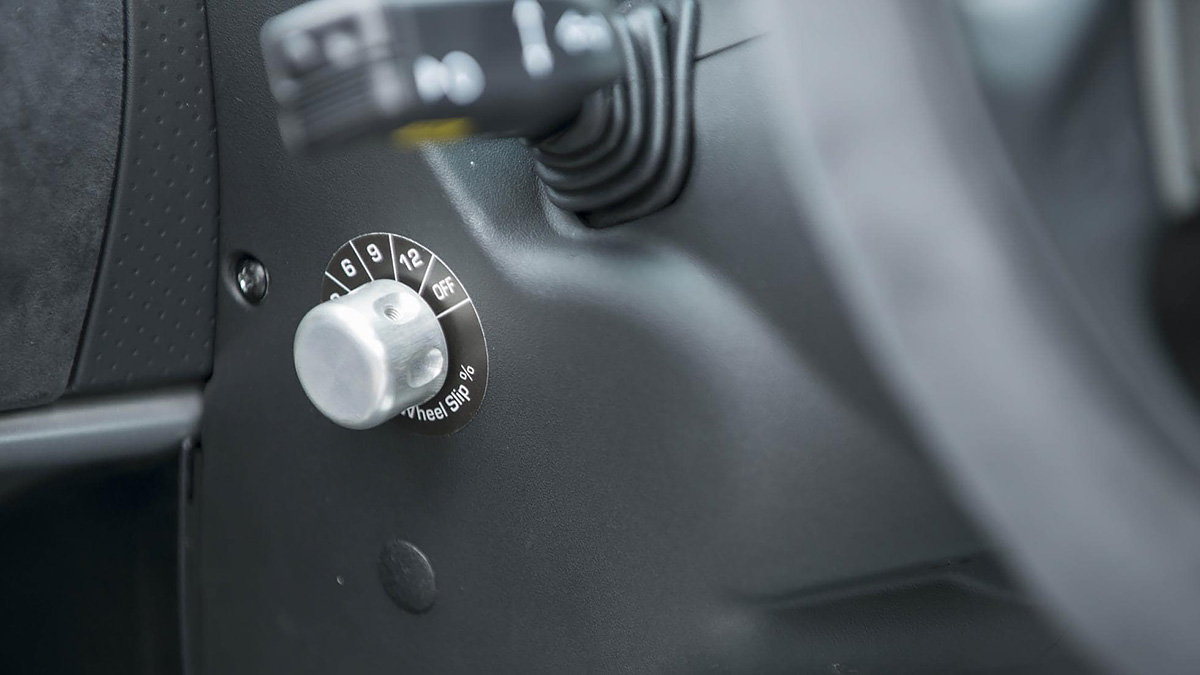
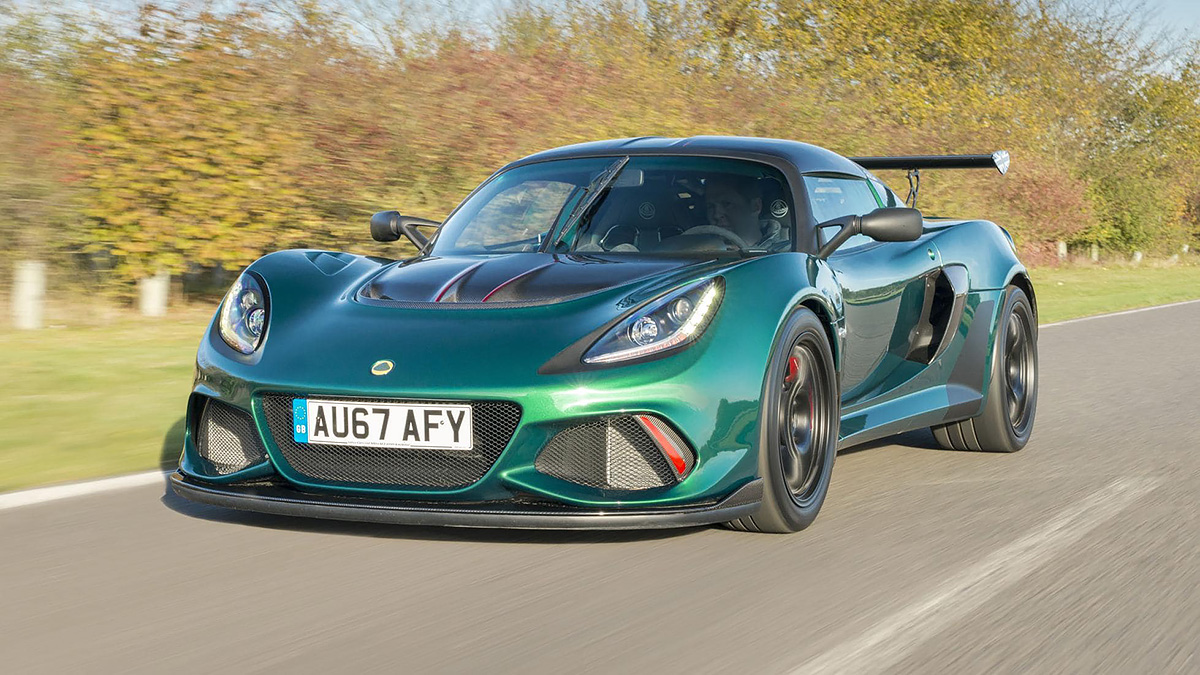
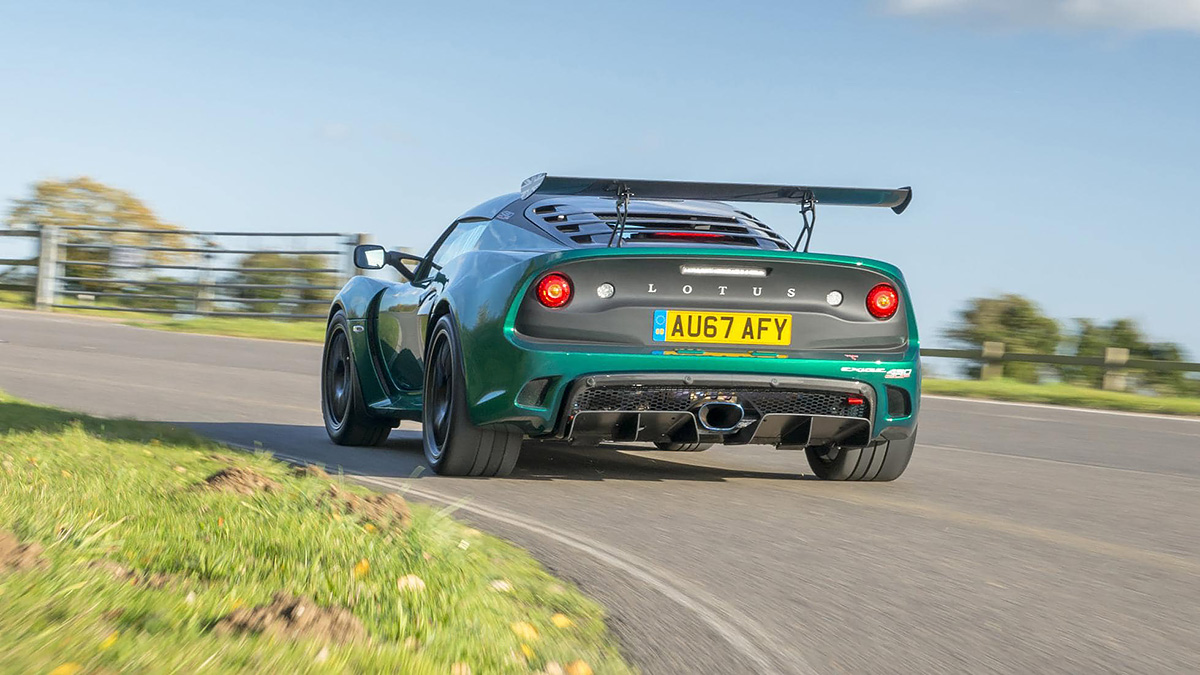
It hardly sounds like a road car.
Nor does it feel like one when you clamber in, especially as air con and a radio are pricey extras. That helps the car weigh around 1,100kg once you’ve put fuel and yourself inside, but you can get ticky with the options boxes if you favour comfort over weight-saving obsession.
Your bum is right down on the floor, your legs stretched out, and you look across the Exige’s wheel arch vents (very racecar) wondering quite how soon it’ll sniff out the road camber that’ll send it into a ditch.
Then you pull away and, within feet, marvel at how the Lotus chassis alchemy has once again turned something innately hardcore and focused into one of the most compliant sports cars on sale.
I still need convincing…
There’s no power steering, but this won’t bother you beyond parking speeds. With just a few miles-per-hour passing through the wheels, the steering is perfectly weighted and sublime to use.
While the Exige uses a single-mass flywheel, pulling away in first gear is an utterly smooth affair because there’s so little weight to actually get moving. And the manual gearbox itself is marvellous, operating though a stick that ranks easily as one of the most artistic components on sale today.
The dampers aren’t adjusted through a dashboard button, but by cranking up the bonnet and twiddling a few dials with your own fair hands. We only had time to try one setup – Lotus’s catch-all for grimy roads and a bit of track use – and while the car made no bones about communicating the bumps of the road through the seat and steering wheel, it did so while soaking them all up and staying absolutely on its line.
Jean-Marc Gales – Lotus CEO – told me the Exige Cup 430 offers “unrivalled point-to-point performance” before giving me the keys. In a world of 400bhp all-wheel-drive hot hatches, I nodded but filed it away in the ‘PR speak’ bank of my memory. But I think he might be right.
The car has supreme traction – far, far more than you’d credit a 1.1-tonne mid-engine rear-drive car having on autumnal roads – and inspires simply staggering amounts of confidence. Allied with steering that reacts like an extension of your nervous system, its relatively narrow body and a simply animalistic turn of pace, it’s hard to imagine much that would be quicker on a British country road.
Or better sounding. The V6 note hardens wonderfully as you hone in on the red line. It’s a fix you’ll want to keep chasing.

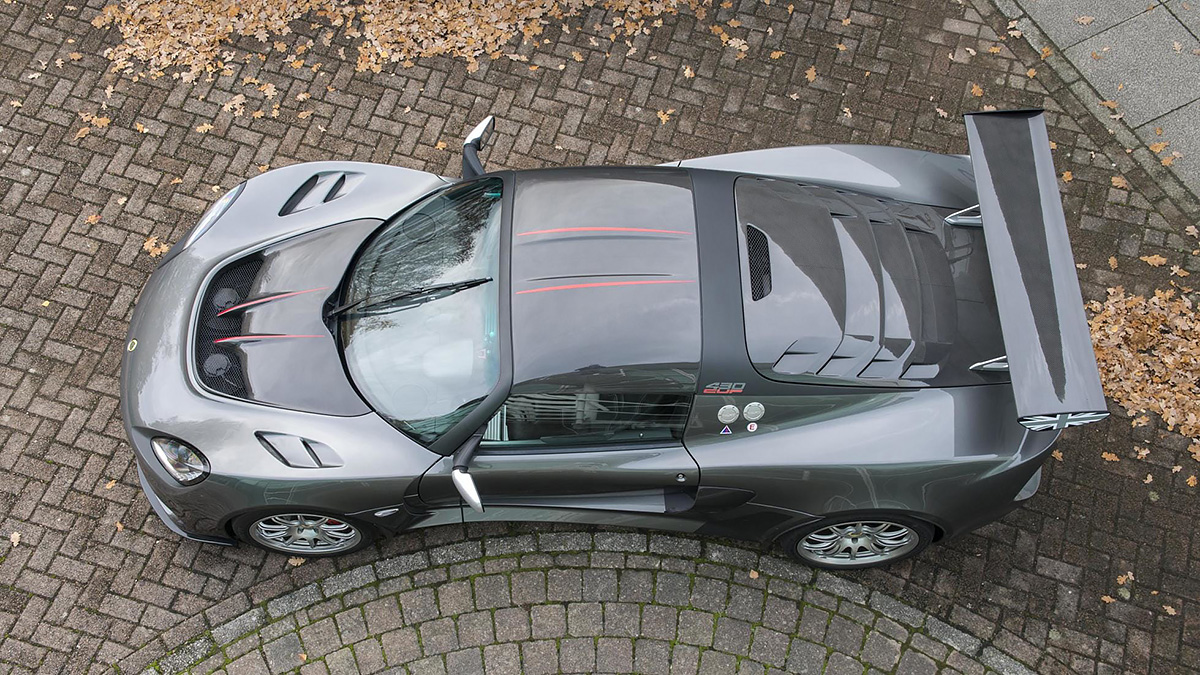
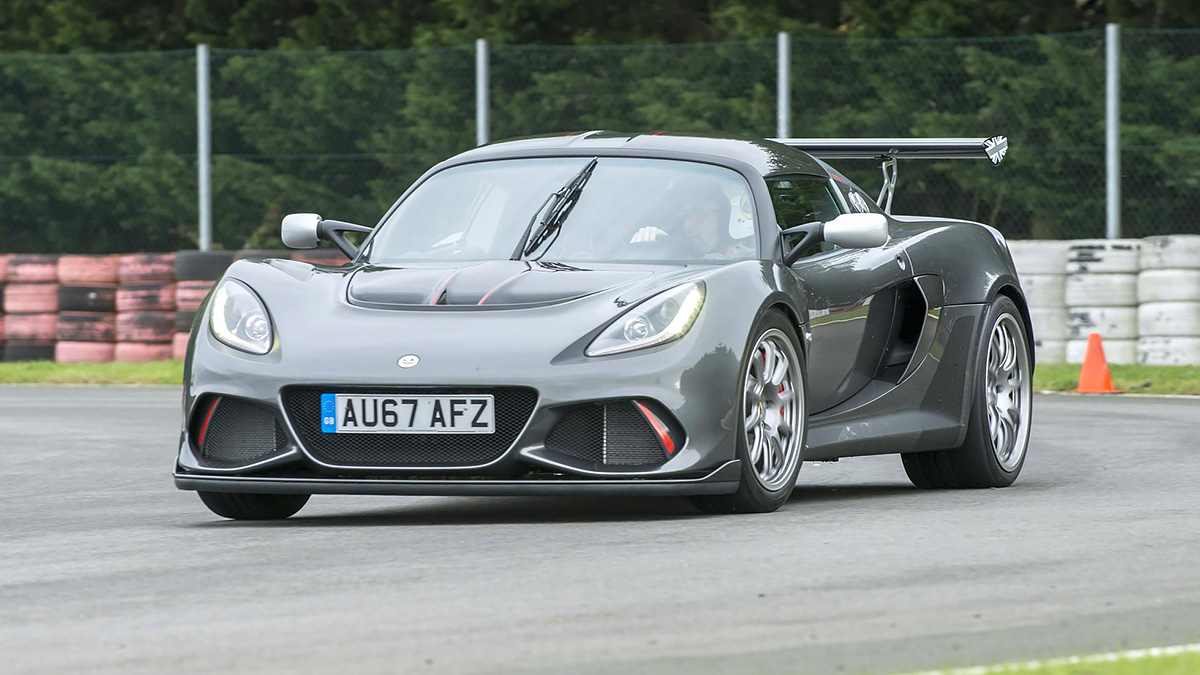
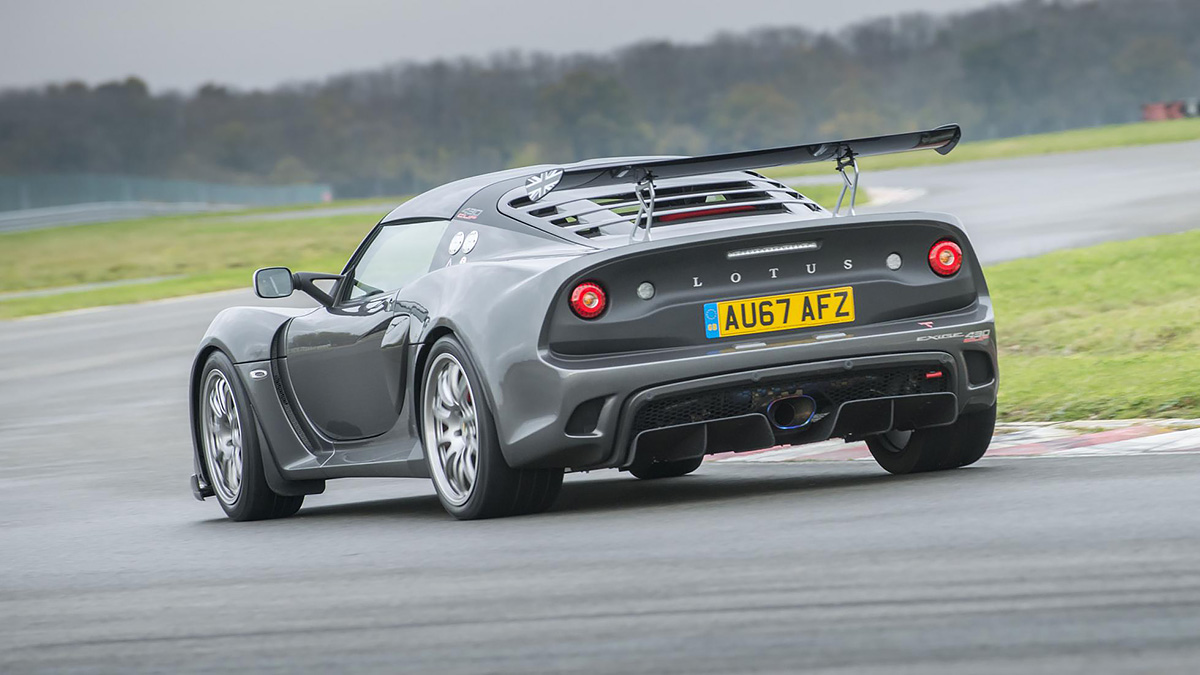
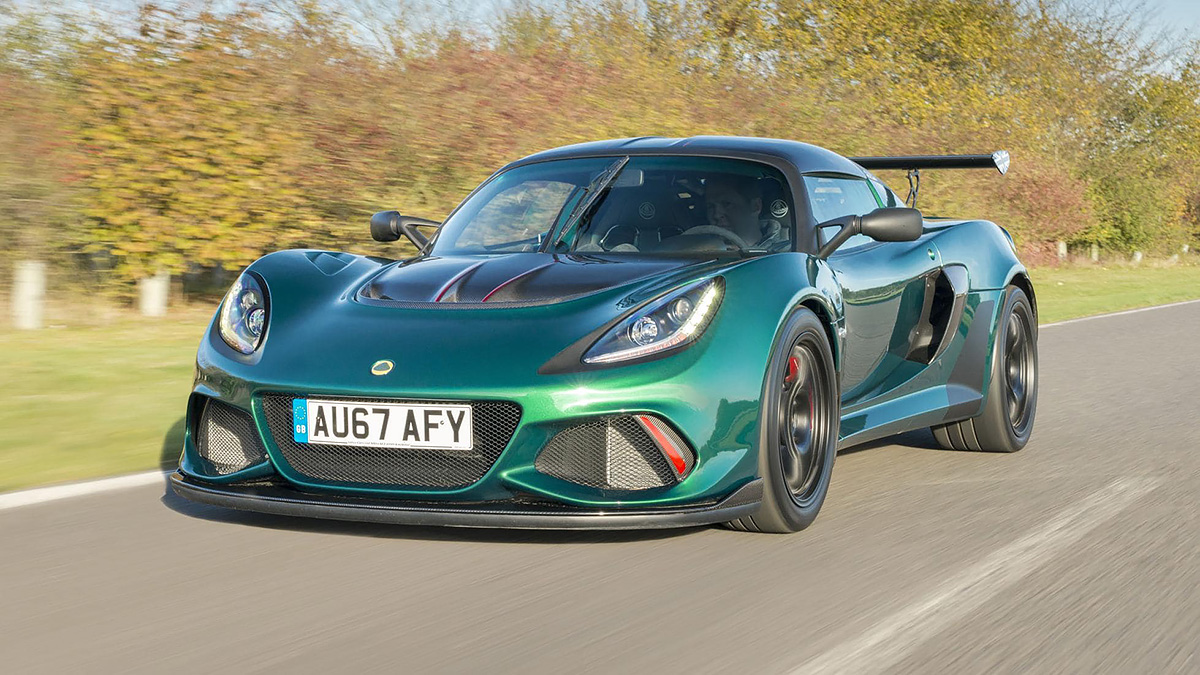
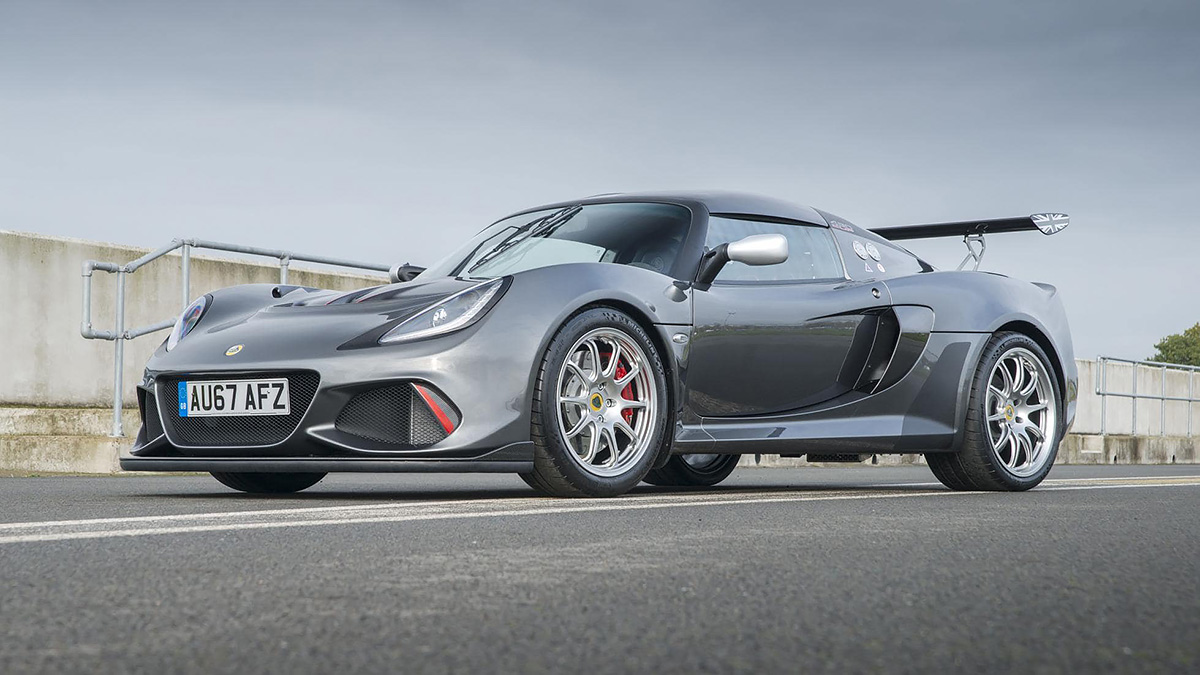
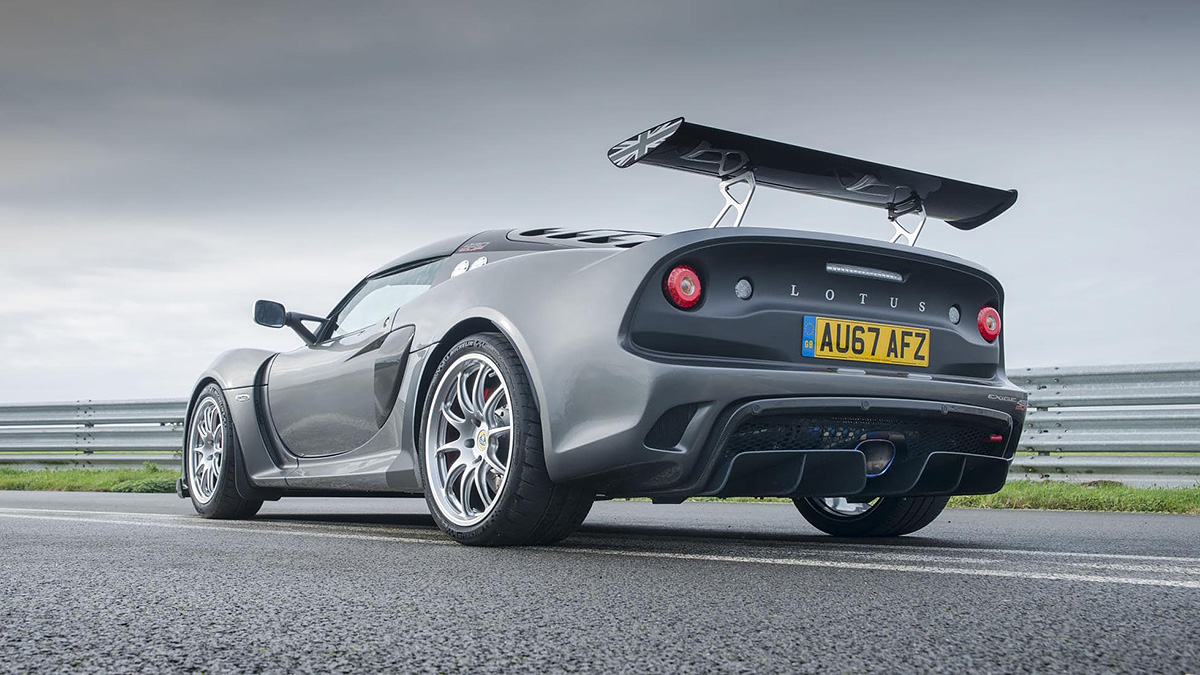
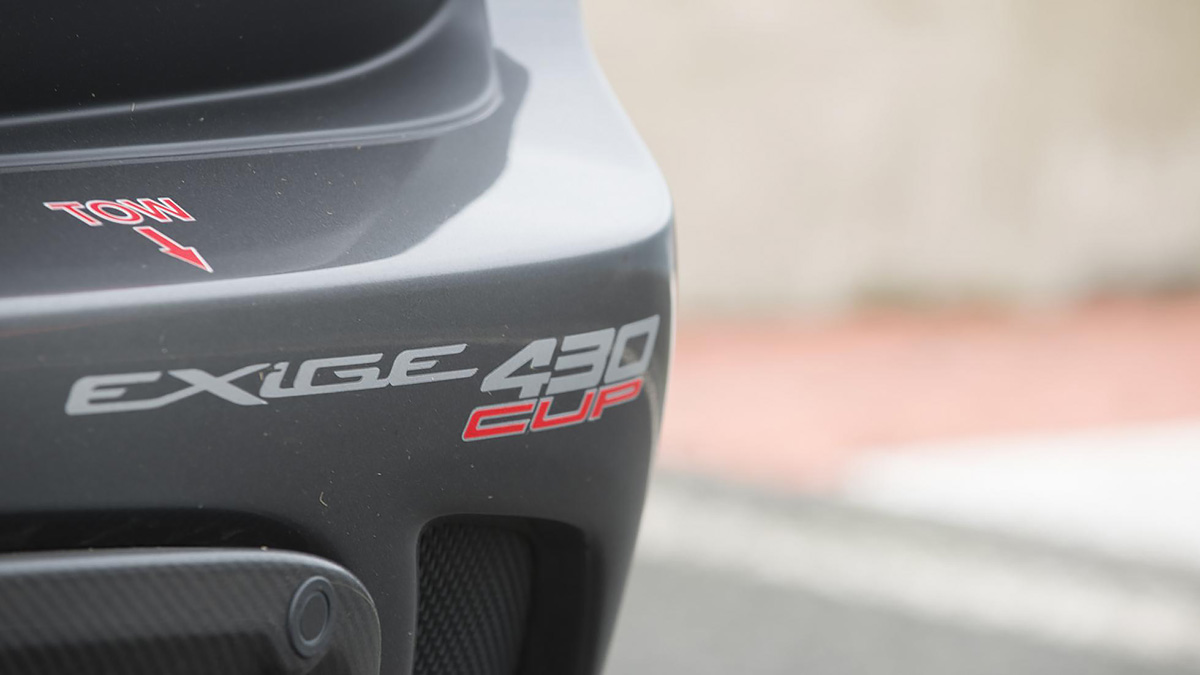
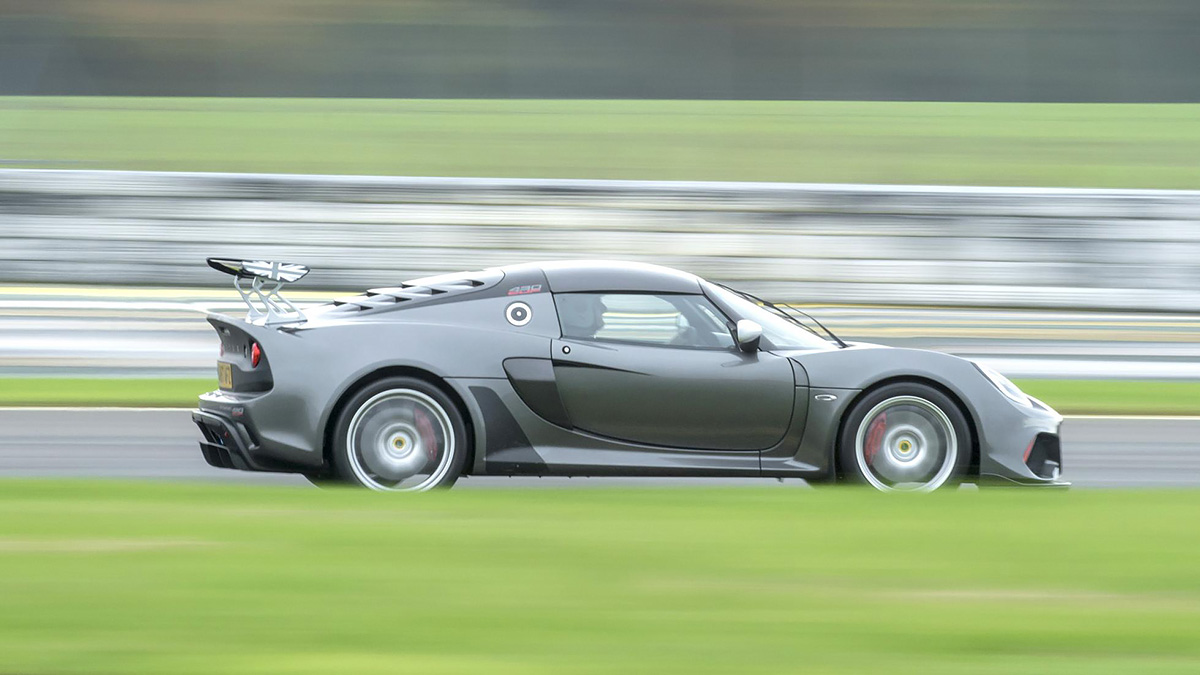
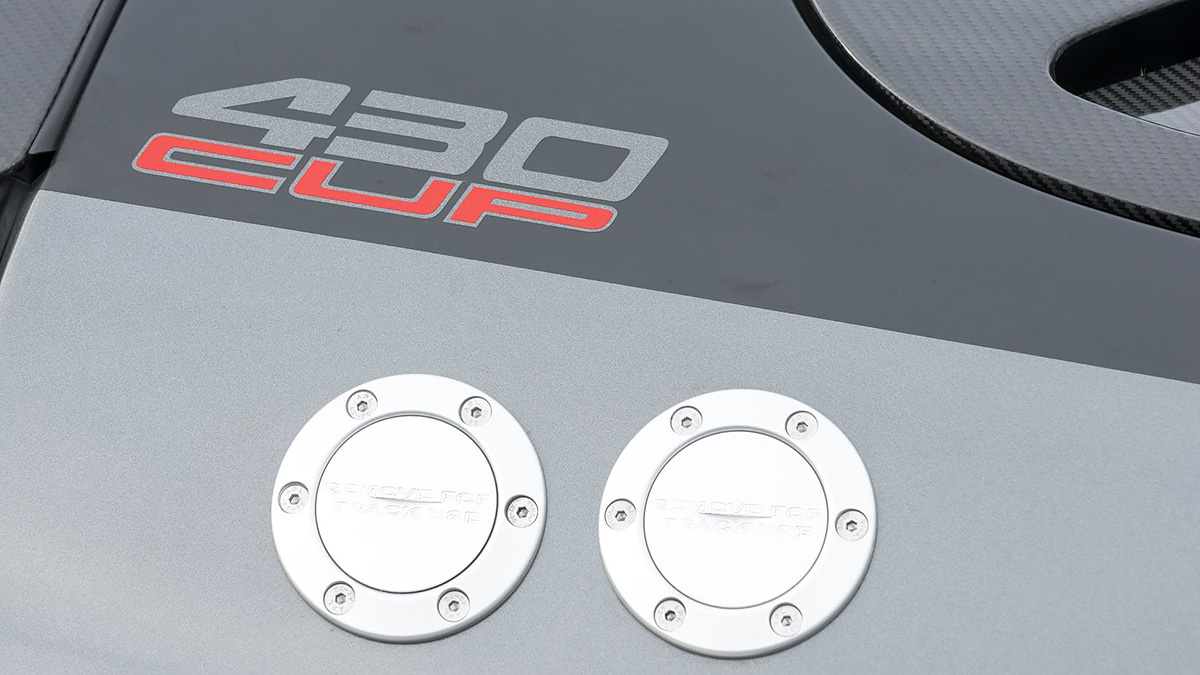
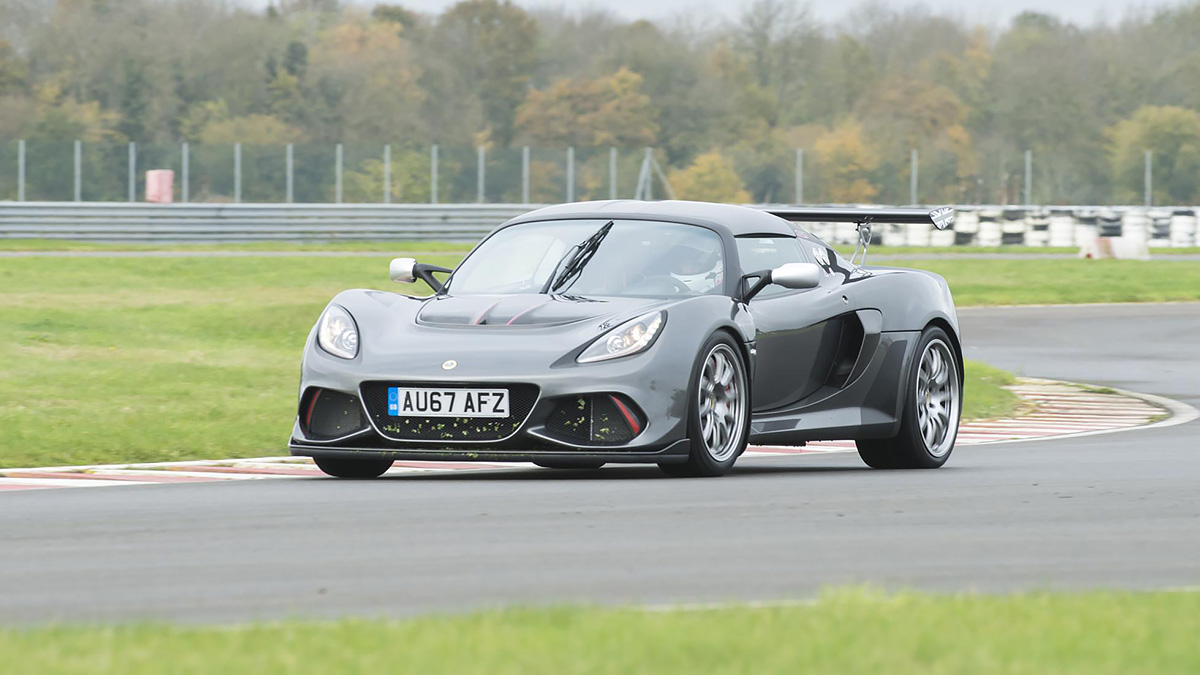
It’s quick, then?
It’s almighty. The supercharger means power is delivered with a wonderful linearity that escapes even the best turbocharged engines, while the Exige’s low mass means the car just projects forward any time you dab, prod or stamp on the throttle. In any gear, too; it’s a properly torquey engine, not some highly strung motorsport special.
Which also means it’s absurdly refined. As my colleague Paul Horrell found with the same engine in the Lotus Evora GT430, the engine noise just drops away at a motorway cruise, and road and tyre roar are pretty well insulated. I drove to Lotus’s Norfolk home in a basic Porsche 718 Cayman and it made far more noise and fuss on the dual carriageway that runs alongside.
Enough boring stuff. How is it on track?
An apt question. So high are the Cup 430’s abilities, you’ll be a fool to discover its limits on the road. But a greasy Hethel test track is a good place to find them.
The Exige comes as standard with highly adjustable safety electronics. With both traction and stability control at their fullest, it’s a supremely sharp car that helps you along without ever feeling like it’s stepping on your toes or spoiling your fun.
You can loosen the stability control through two steps – Sport and Race – which allow a bit of sliding with a safety net, though both turn off the understeer control. The front end does wander wide if you’re keen with your corner entry speeds, but it’s easily corrected with an intuitive lift of the throttle.
Beyond that, you can switch the stability control off completely, then adjust the traction control through a number of levels to decide how much you’d like the rear wheels to be able to spin. If it’s not dry, you’ll discover how spiky a mid-engined sports car with this much power can be, but you’ll have ignored a lot of warning signs to get there. This car is a keen communicator.
Enough boring stuff. How is it on track?
An apt question. So high are the Cup 430’s abilities, you’ll be a fool to discover its limits on the road. But a greasy Hethel test track is a good place to find them.
The Exige comes as standard with highly adjustable safety electronics. With both traction and stability control at their fullest, it’s a supremely sharp car that helps you along without ever feeling like it’s stepping on your toes or spoiling your fun.
You can loosen the stability control through two steps – Sport and Race – which allow a bit of sliding with a safety net, though both turn off the understeer control. The front end does wander wide if you’re keen with your corner entry speeds, but it’s easily corrected with an intuitive lift of the throttle.
Beyond that, you can switch the stability control off completely, then adjust the traction control through a number of levels to decide how much you’d like the rear wheels to be able to spin. If it’s not dry, you’ll discover how spiky a mid-engined sports car with this much power can be, but you’ll have ignored a lot of warning signs to get there. This car is a keen communicator.
But it’s also a hundred grand…
Well, yes. But it’s cheaper than the Evora. And it appears the Lotus buyer is an affluent sort these days, anyway. The average cost of a car rolling out of Hethel now tops £60,000, and our tour of the factory revealed a lot of those are still Elises. Albeit Elises covered in carbon.
And if luggage space isn’t of vital importance, you could genuinely live with this Exige day-to-day. It’s got parking sensors, for crying out loud. Post yourself between the carbon roof and sill and you’ll experience all the drama of a prototype racer. Pull away and you’ll experience one of the most addictive yet welcoming sports cars on sale.

